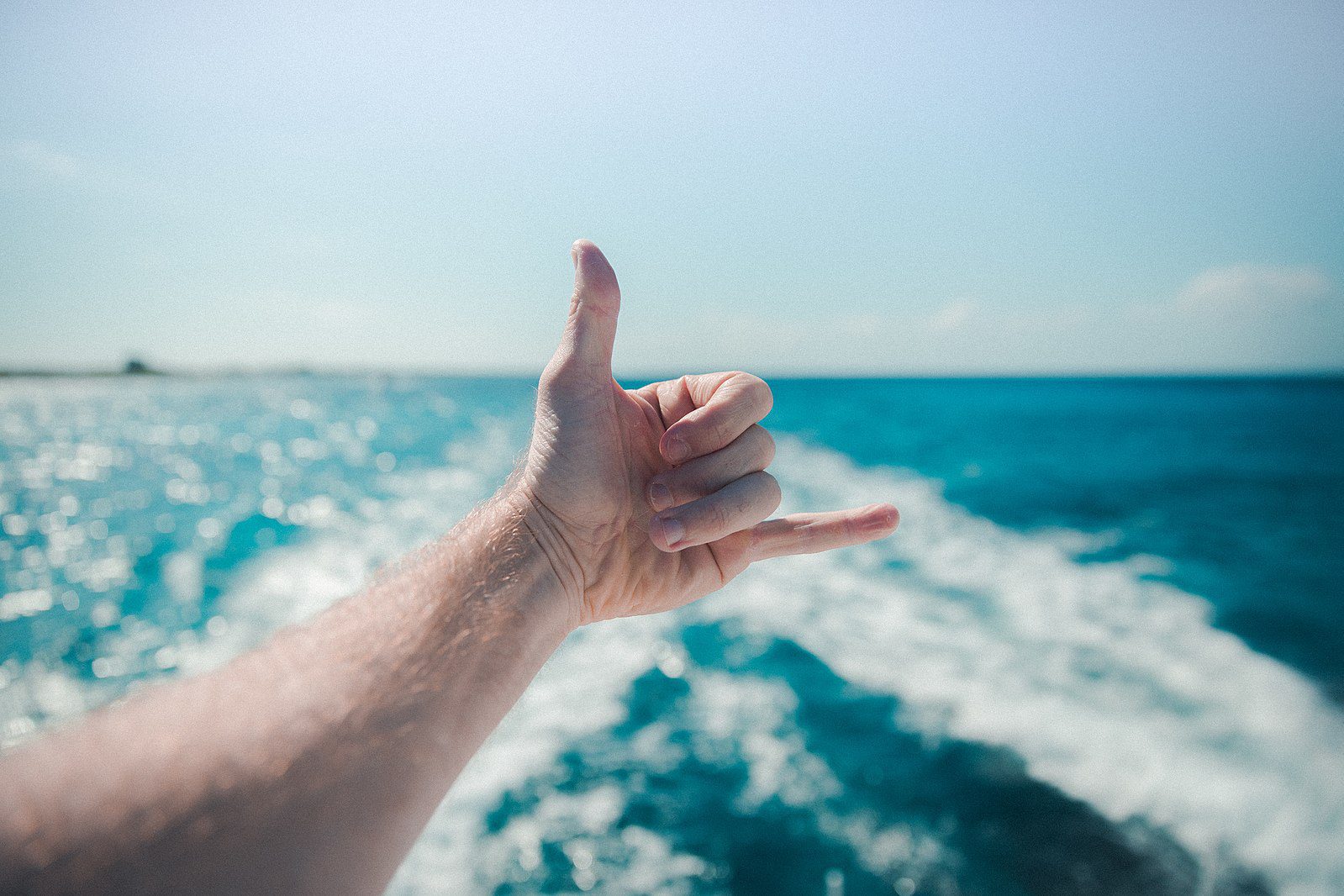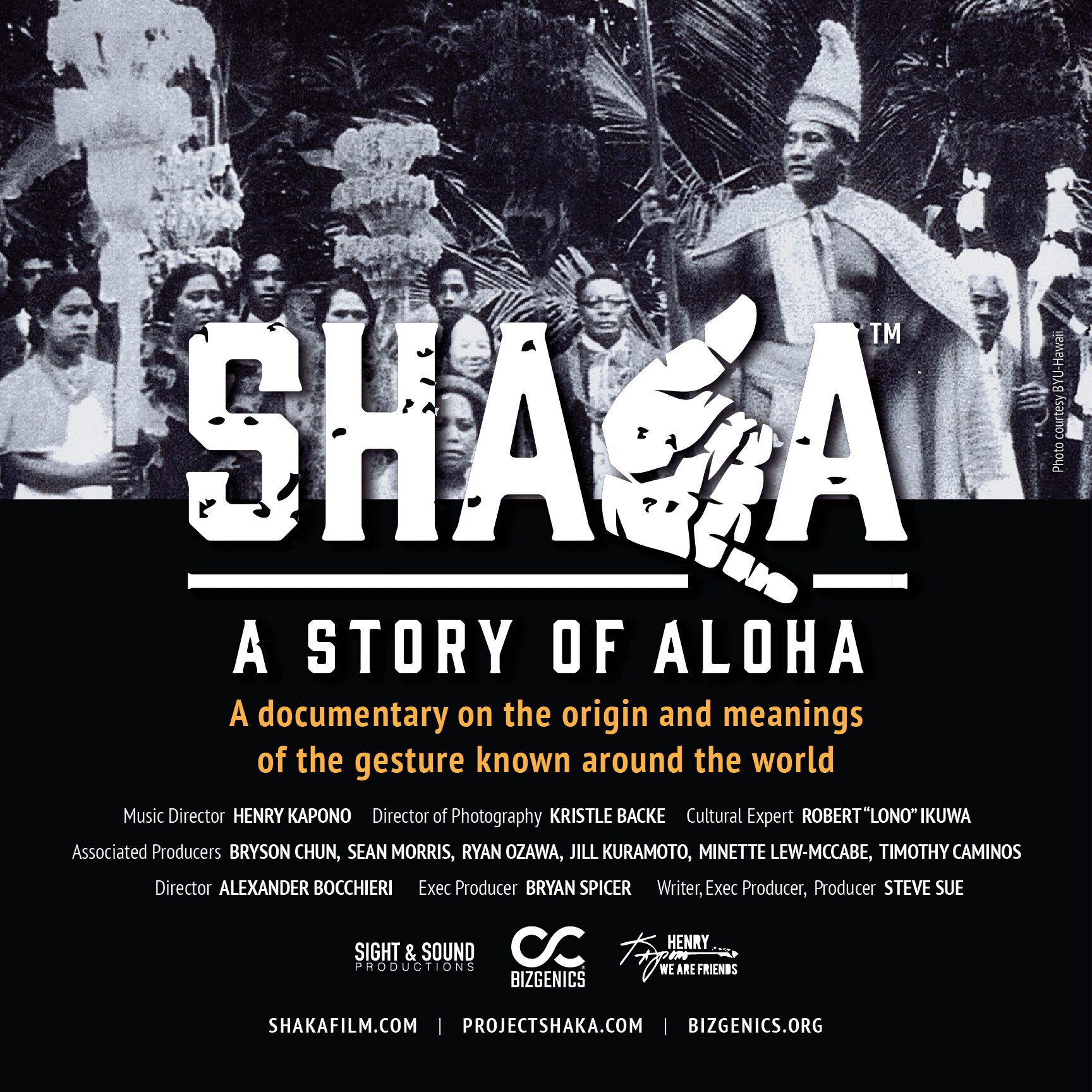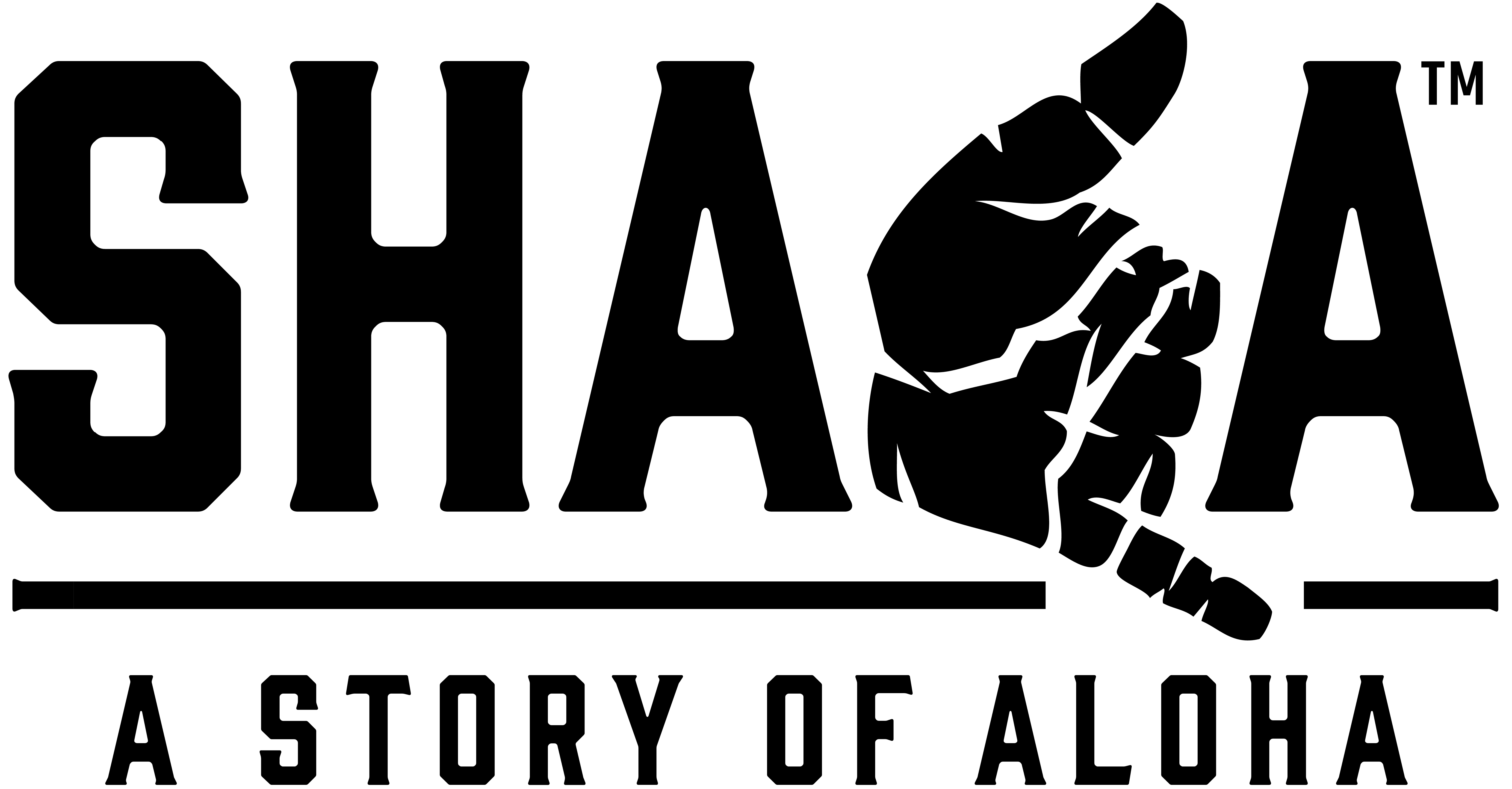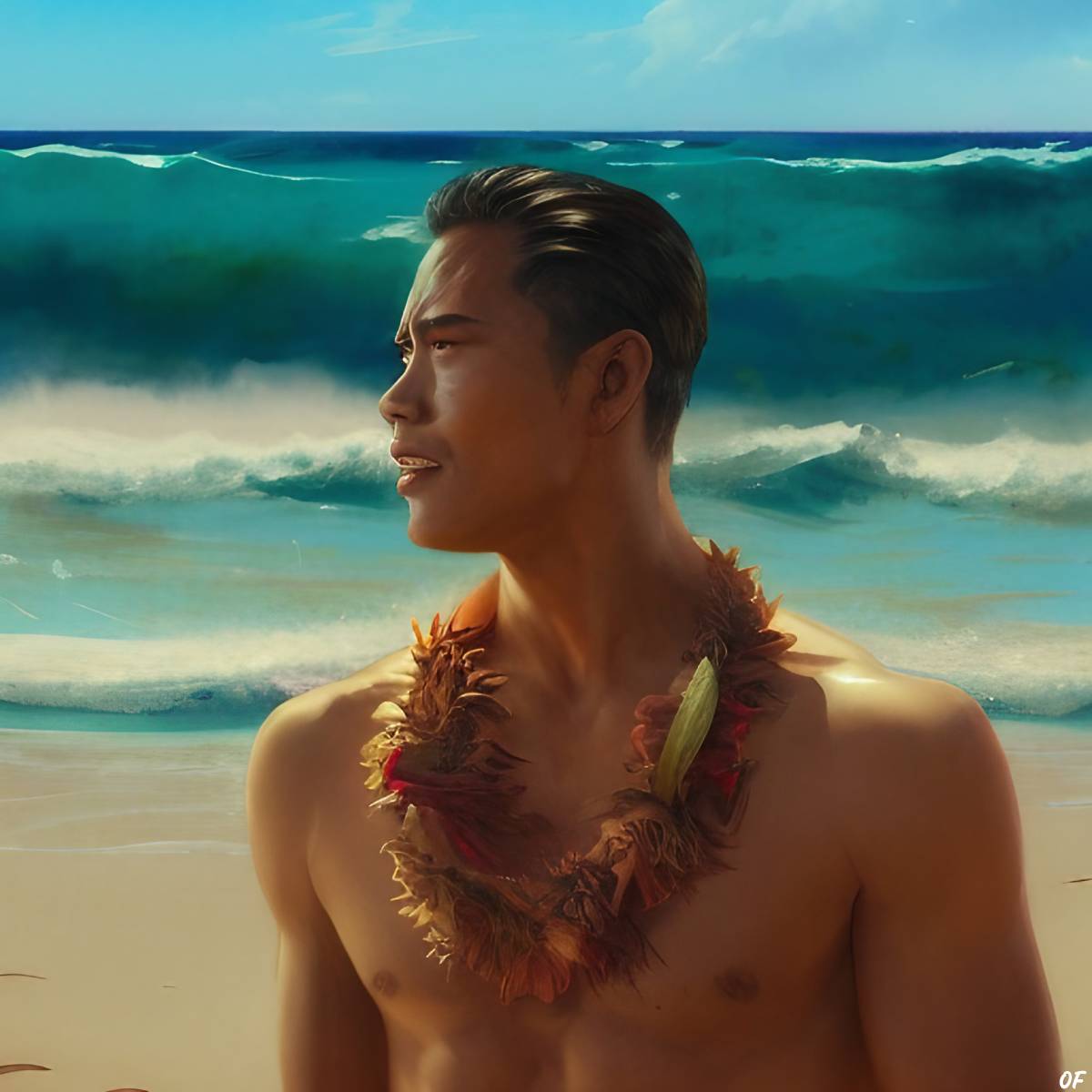Whether catching waves at Waikiki or down under on Bondi beach, surfers worldwide recognize the hang loose sign, also known as the shaka, as a gesture of greeting that symbolizes friendship, admiration, and respect.
The hang loose sign and Hawaiian popular culture
There is widespread agreement that the shaka gesture originated in Hawaii; however, surprisingly, the shaka hand sign was not introduced into Hawaiian popular culture via the surfing community. Rather, according to the Honolulu Star Bulletin, it was popularized by a used car salesman, David “Lippy” Espinda, who, in the 1960s, would throw a shaka sign and sign off of his commercials by exclaiming, “shaka brah!”
Not long after being introduced into the Hawaiian television media with Espinda’s car ads, the shaka sign frequently appeared during the 70s and 80s in the campaign ads for Frank Fasi, Honolulu’s longest-serving mayor.

A shaka by any other name . . .
While there is some documentation of the first popular usage of the double shaka sign in Hawaii, there is far more mystery surrounding the use of the word “shaka” to identify the gesture. Because the shaka sign originated in Hawaii, many assume that the term “shaka” comes from the Hawaiian language; however, because the Hawaiian language does not have a /sh/ sound, it does not seem possible that the word was imported into English from Hawaiian.
Another, more plausible theory for the origin of the term “shaka,” stipulates that because Hawaii has a large Japanese population, the word shaka, which in Japanese is a traditional nickname for the historical Buddha, was imported from Japanese into Hawaiian English and was eventually attached to the shaka sign.
According to a release note by the Oxford English Dictionary, “Some secondhand accounts claim that this word was in use as a familiar blessing in Hawaii as early as the 1880s, but documentation of such use has not yet been found.”
Darker beginnings for the hang loose sign
While the shaka gesture, or as it is sometimes called, the hang loose sign, expresses positive sentiments in modern surf culture, according to prevailing local lore, the true origin of the shaka sign may have been a result of a nasty industrial accident during Hawaii’s sugar plantation era.
From the 1850s through the middle of the 1900s, sugar plantations were the primary force of the Hawaiian economy. Because the work was so difficult, and the conditions were so brutal, the sugar companies recruited labor from a number of countries to fulfill their need for inexpensive labor. They brought in immigrants from Japan, China, and the Philippines.
Native Hawaiian accident
While most laborers on the plantations were imported from Asia, some native Hawaiians also worked in the sugar industry. During World War I, Hamana Kalili of Laie, a native Hawaiian, worked at the Kahuku Sugar Mill. One day, while Kalili was feeding sugar cane stalks into a machine at the mill, his right hand got caught in the rollers, and he lost his three middle fingers.
According to an interview with the Honolulu Star Bulletin, Kalili’s grandnephew, Vonn Logan, indicated that because his uncle could no longer work in the mill, Kalili became a security guard on the sugar train that used to travel between Sunset Beach and Kaaawa.
Hawaiian kids on the shaka train
After losing his three middle fingers in the accident, one of Hamana Kalili’s assignments was to keep the local kids off of the sugar train. It was well known that all of the kids would try to jump the train as it traveled from the Kahuku Sugar Mill to town, and Kalili was supposed to keep them from doing so.
As kids always manage to do, they developed a system based on his missing fingers to avoid Kalili so that they would not be caught on the train. According to Kalili’s grandnephew Logan, the kids started signaling each other with an all-clear wave: “Since (Kalili) lost his fingers, the perfect signal was what we have now as the ‘shaka sign.’ That’s how you signaled the way was clear.”
Shaka sign or shark bite?
In 2014, the local news network Hawaii News Now ran a story on Hamana Kalili and the origin of the shaka sign. On the broadcast, a local storyteller not only related the story of the accident at the Kahuku Sugar Mill, but also suggested that Kalili was a bit of a storyteller himself.
According to local lore, Kalili would sometimes show the children his injury, and tell the kids that he had lost his fingers to a hammerhead shark bite. Then, he would chase the kids around waving his thumb and pinky finger while shouting, “shark eyes, shark eyes,” which, according to this version of the shaka origin myth, morphed into “shaka.”

Shaka creator Kalili becomes cultural icon
The first man to reportedly throw the hang loose sign, Hamana Kalili, has now been immortalized at the Polynesian Cultural Center on Oahu. At the entrance to the center, greeting the thousands of visitors who stroll by every day, there is a statue of Kalili, complete with a raised right hand, which is missing its three middle fingers.
Kalili’s fame as the originator of the shaka is likely to continue to grow, as a feature-length documentary, Shaka, A Story of Aloha, is scheduled to be released in late 2022. According to the documentary’s press kit, the film “is a feature-length documentary film and features an award-winning team of production artists.”
Shaka on the move: Hawaii to California to planet earth
The shaka sign traveled a long way from its humble origins, likely the result of an industrial accident, into Hawaii pop culture via the television ads of both a used car salesman and a politician.
Then, the hand gesture was appropriated by the Hawaii surf community as a sign of friendship, admiration, and respect, but it did not stop there. Traveling surfers likely transported the shaka from Hawaii to the beaches of California, where it is believed that the moniker “hang loose” was attached to the gesture.
Today, just about anywhere on earth, where one finds a surf break, you are likely to see surfers, middle fingers curled, thumb and little finger raised, greeting each other with their gesture of goodwill and affection.



